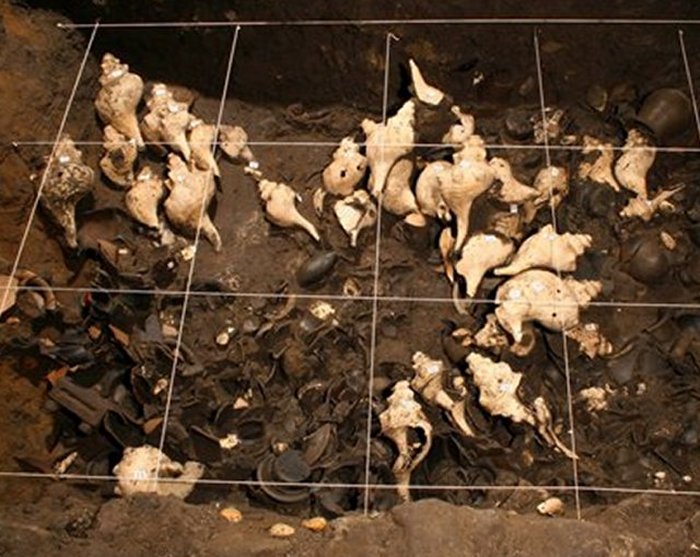Secret Underground Ancient Teotihuacan Tunnel May Solve A Long-Standing Mystery And Reveal Royal Tombs
AncientPages.com - Many secrets are hidden in Teotihuacan, northeast of Mexico City, Mexico.
Aztecs and the Toltecs, reached a place called Teotihuacan that was already enshrined in myth. In Nahuatl, the Aztec language still spoken in many parts of Mexico, Teotihuacan means "the place where men become gods."
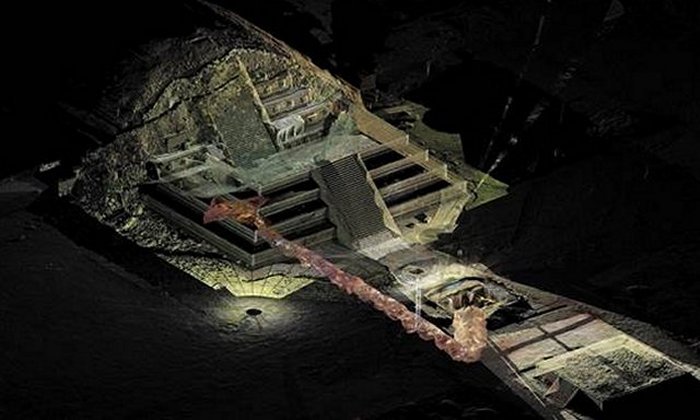
Teotihuacan, Mexico: Tunnel discovered under pyramid in Teotihucan archaeological site. A scanner view of a tunnel under a pyramid at the archaeological site of Teotihuacan, Mexico. INAH/Handout/EPA
Kings reigned at Teotihuacan and were buried there, for to be buried in Teotihuacan was to join the gods in an afterlife.
One of Mexico's most-visited ancient sites, Teotihuacan is home to massive pyramids, temples and elite residences including many adorned with colorful murals. Teotihuacán has long stood as the greatest of Mesoamerican mysteries.
The city reached its peak between 100 B.C. and 650 B.C. with a population as large as 200,000, growing rich from a wide-ranging trade in obsidian that in pre-Columbian times was used to make knives and other weapons.
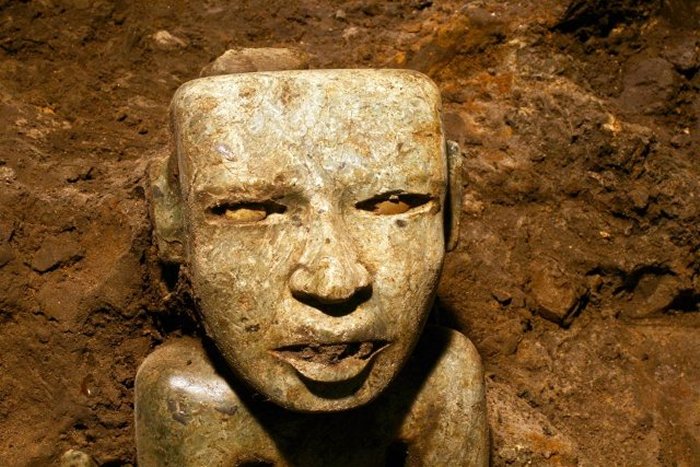
A sculpture unearthed at the Teotihuacan archeological site in Mexico. Mexican archaeologists have concluded a yearslong exploration of a tunnel sealed nearly 2,000 years ago at the ancient city of Teotihuacan and found thousands of relics. Teotihuacan dominated central Mexico centuries before the rise of the Aztecs in the 14th century. (AP Photo/Proyecto Tlalocan, INAH)
In designing Teotihuacan (pronounced tay-oh-tee-wah-KAHN), the city’s architects had arranged the major monuments on a north-south axis, with the so-called “Avenue of the Dead” linking the largest structure, the Temple of the Sun, with the Ciudadela, the southeasterly courtyard that housed the Temple of the Plumed Serpent.
According to Clemency Coggins, a professor emerita of archaeology and art history at Boston University, the ancient city was designed as a physical manifestation of its founders’ creation myth. Not only was Teotihuacán laid out in a measured rectangular grid, but the pattern was oriented to the movement of the sun, which was born there, Coggins pointed out.
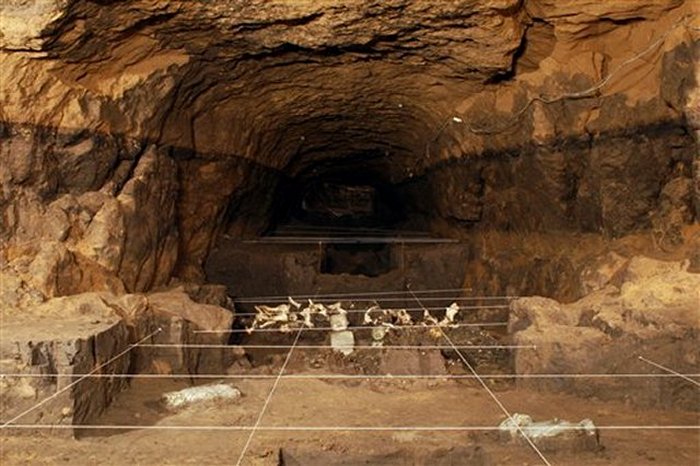
Sculptures and shells unearthed by investigators at the Teotihuacan archeological site in Mexico. Mexican archaeologists have concluded a yearslong exploration of a tunnel sealed nearly 2,000 years ago at the ancient city of Teotihuacan and found thousands of relics. Teotihuacan dominated central Mexico centuries before the rise of the Aztecs in the 14th century. (AP Photo/Proyecto Tlalocan, INAH)
Archaeologists have conducted long-term archaeological research in the City of the Gods and a chance discovery beneath a nearly 2,000-year-old pyramid may soon lead to the heart of a lost civilization.
See also:
Great Pyramid of Cholula: World’s Largest Pyramid
Mysterious Teotihuacan ‘Host’ Figurines From Metepec, Mexico
The structure is filled with thousands of ritual objects and may lead to royal tombs, according to Sergio Gomez the lead Mexican archaeologist working with the project.
The entrance to the 1,800-year-old tunnel was first discovered in 2003, and its contents came to light thanks to excavations by remote-control robots and then human researchers.
The site is located approximately 30 miles (50 kilometers) northeast of Mexico City. The ruins have long been shrouded in mystery because its inhabitants did not leave behind written records.
The artifacts found inside the tunnel, located below the Temple of the Plumed Serpent, include finely carved stone sculptures, jewelry and shells. The tunnel ran approximately 330 feet from the Ciudadela to the center of the Temple of the Plumed Serpent. The hole that had appeared during the 2003 storms was not the actual entrance; that lay a few yards back, and it had apparently been intentionally sealed with large boulders nearly 2,000 years ago.
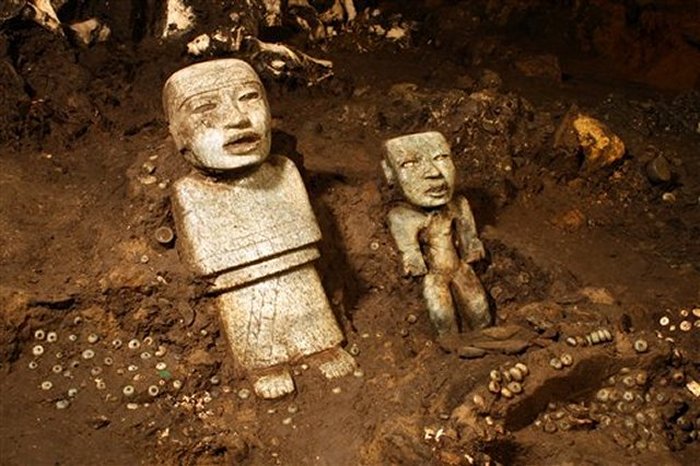
Sculptures unearthed by investigators at the Teotihuacan archeological site in Mexico. Mexican archaeologists have concluded a years long exploration of a tunnel sealed nearly 2,000 years ago at the ancient city of Teotihuacan and found thousands of relics. AP Photo/Proyecto Tlalocan, INAH
About 50,000 objects, of which 4,000 made of wood as well as scores of obsidian blades and arrow heads, provide clues into how the city's priests and rulers conceived the underworld.
Researchers hope to find a royal tomb at the end of the tunnel and as Gomez says, due to the magnitude of the offerings that have been found, it can't be in any other place.
"We've been able to confirm all of the hypotheses we've made from the beginning," he added, saying ongoing excavations could yield more major discoveries.
Teotihuacan was settled as early as 400 B.C., but it was only around A.D. 100, an era of robust population growth and increased urbanization in Mesoamerica
The city had long been abandoned by the time the Aztecs came to power in the Valley of Mexico in the 14th century, yet it continued to play an important role as a destination for religious pilgrimages.
AncientPages.com
More From Ancient Pages
-
 Fascinating Discovery Of An Inhabited Underground World In Medieval Wales
Featured Stories | Mar 2, 2024
Fascinating Discovery Of An Inhabited Underground World In Medieval Wales
Featured Stories | Mar 2, 2024 -
 Leonardo Da Vinci’s Mother Might Have Been A Slave – Here’s What The Discovery Reveals About Renaissance Europe
Featured Stories | Mar 30, 2023
Leonardo Da Vinci’s Mother Might Have Been A Slave – Here’s What The Discovery Reveals About Renaissance Europe
Featured Stories | Mar 30, 2023 -
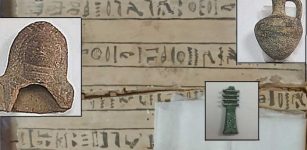 Smuggled Ancient Egyptian Artefacts Finally Arrive Home From Italy
Archaeology | May 16, 2023
Smuggled Ancient Egyptian Artefacts Finally Arrive Home From Italy
Archaeology | May 16, 2023 -
 1,300-Year-Old Art Mystery Solved By Scientist
Archaeology | Sep 7, 2022
1,300-Year-Old Art Mystery Solved By Scientist
Archaeology | Sep 7, 2022 -
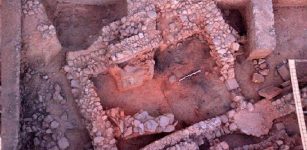 Exciting discoveries made by archaeologists in Laconia
News | Aug 25, 2015
Exciting discoveries made by archaeologists in Laconia
News | Aug 25, 2015 -
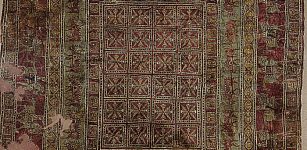 Pazyryk Carpet: Extraordinary Craftsmanship Of Siberian Iron Age Textile Dyers
Archaeology | Mar 5, 2021
Pazyryk Carpet: Extraordinary Craftsmanship Of Siberian Iron Age Textile Dyers
Archaeology | Mar 5, 2021 -
 Evidence Ancient Civilizations Had Knowledge About Planets In Our Solar System Thousand Years Ago
Ancient Mysteries | Mar 10, 2021
Evidence Ancient Civilizations Had Knowledge About Planets In Our Solar System Thousand Years Ago
Ancient Mysteries | Mar 10, 2021 -
 Jizo – Protector Of Children, Travelers And Women In Japanese Mythology
Featured Stories | Dec 23, 2015
Jizo – Protector Of Children, Travelers And Women In Japanese Mythology
Featured Stories | Dec 23, 2015 -
 Ming-Era Two Shipwrecks With 100,000 Ancient Relics Examined By Scientists
Archaeology | May 30, 2023
Ming-Era Two Shipwrecks With 100,000 Ancient Relics Examined By Scientists
Archaeology | May 30, 2023 -
 Mythical Place Where Gorgon Medusa Dwelled And Was Killed May Have Been Found By Archaeologists
Featured Stories | Sep 15, 2024
Mythical Place Where Gorgon Medusa Dwelled And Was Killed May Have Been Found By Archaeologists
Featured Stories | Sep 15, 2024 -
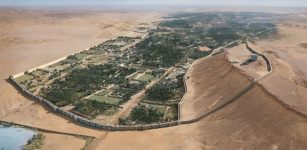 Impressive Complex Of 4,000-Year-Old Walled Oases Discovered In The Arabian Desert
Archaeology | Jul 9, 2025
Impressive Complex Of 4,000-Year-Old Walled Oases Discovered In The Arabian Desert
Archaeology | Jul 9, 2025 -
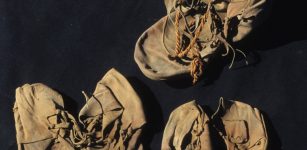 Unsolved Ancient Mystery: Why Were These Foreign Shoes Hidden In A Temple?
Archaeology | Mar 29, 2014
Unsolved Ancient Mystery: Why Were These Foreign Shoes Hidden In A Temple?
Archaeology | Mar 29, 2014 -
 Mysterious Stone Age Cemetery Found Near The Arctic – Why Are The Graves Empty?
Archaeology | Dec 4, 2023
Mysterious Stone Age Cemetery Found Near The Arctic – Why Are The Graves Empty?
Archaeology | Dec 4, 2023 -
 Why Are Statues Of Mythical Yeti Dividing People In The Himalayas?
Featured Stories | Feb 18, 2020
Why Are Statues Of Mythical Yeti Dividing People In The Himalayas?
Featured Stories | Feb 18, 2020 -
 Megalithic Structures Are Not Mass Graves For Neolithic Plague Victims
Archaeology | Sep 9, 2024
Megalithic Structures Are Not Mass Graves For Neolithic Plague Victims
Archaeology | Sep 9, 2024 -
 Owain Glyndwr: Famous Medieval Welsh Warrior Prince And Symbol Of Independence
Featured Stories | Jun 20, 2018
Owain Glyndwr: Famous Medieval Welsh Warrior Prince And Symbol Of Independence
Featured Stories | Jun 20, 2018 -
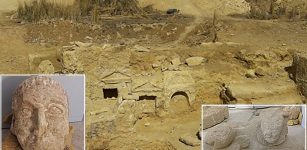 Remains Of Graeco-Roman Temple Discovered Near Egypt’s Siwa Oasis
Archaeology | Apr 6, 2018
Remains Of Graeco-Roman Temple Discovered Near Egypt’s Siwa Oasis
Archaeology | Apr 6, 2018 -
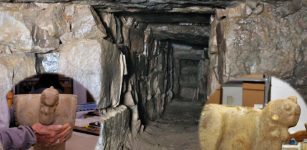 35 Secret Underground Passageways Discovered Beneath Chavín De Huántar Temple Complex In Peru
Archaeology | Jun 1, 2022
35 Secret Underground Passageways Discovered Beneath Chavín De Huántar Temple Complex In Peru
Archaeology | Jun 1, 2022 -
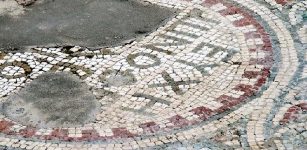 Mosaics With Oceanus And Medusa In Tomb Of Ancient City Of Perge, Turkey
Archaeology | May 16, 2017
Mosaics With Oceanus And Medusa In Tomb Of Ancient City Of Perge, Turkey
Archaeology | May 16, 2017 -
 Lost Ancient Sahara Civilization Buried Beneath The Sand – New Clues And Some Surprises
Ancient Mysteries | Apr 24, 2025
Lost Ancient Sahara Civilization Buried Beneath The Sand – New Clues And Some Surprises
Ancient Mysteries | Apr 24, 2025

